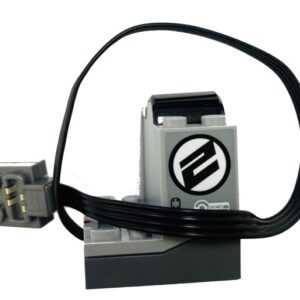In today’s dynamic financial landscape, choosing the right healthcare financing options is crucial for maintaining your financial health while ensuring you receive the medical care you need. One of the most adaptable choices available today is the **flexible spending option**. This innovative financial mechanism can significantly help you manage your healthcare costs more effectively and is beneficial for individuals and families alike. In this guide, we’ll explore the ins and outs of the **flexible spending option**, its advantages, and how you can maximize its potential.
What is a Flexible Spending Option?
A **flexible spending option** (FSA) is an employer-sponsored benefit that allows employees to set aside pre-tax earnings for eligible healthcare expenses. This type of account is designed to provide employees with greater flexibility in managing their healthcare costs. With a **flexible spending option**, you can pay for out-of-pocket medical expenses with pre-tax dollars, thus reducing your taxable income and providing you with more purchasing power.
How Does a Flexible Spending Option Work?
To utilize a **flexible spending option**, employees must enroll during their employer’s open enrollment period. Here’s a rundown of how it works:
- Employee Contributions: Employees can decide how much money to contribute to the account for the plan year, up to a specified limit set by the IRS (for 2023, the limit is $3,050 per employee).
- Use of Funds: The funds in the FSA can be used for various eligible healthcare expenses, including copayments, deductibles, prescription drugs, and over-the-counter items.
- Tax Benefits: Contributions are deducted from your paycheck before taxes, lowering your taxable income.
- Reimbursement: Employees can submit receipts for reimbursement from their FSA account or, in many cases, use a debit card linked directly to their FSA for purchases.
Advantages of Using a Flexible Spending Option
Utilizing a **flexible spending option** has numerous benefits that can provide substantial financial relief. Below are some of the key advantages:
- Tax Savings: Contributions to the FSA are made pre-tax, effectively decreasing your taxable income. This means less money is withheld for taxes, allowing you to keep more of your hard-earned salary.
- Reduced Healthcare Costs: By using pre-tax dollars to pay for medical expenses, you effectively lower the total cost of the services you require.
- Budgeting Flexibility: Given the ability to set aside funds for the upcoming year, you can budget better for medical expenses, avoiding any financial surprises that may arise.
- Immediate Access to Funds: Unlike Health Savings Accounts (HSAs), where funds accumulate based on contributions, a **flexible spending option** allows you to access the total annual contribution amount right away, which can be particularly beneficial for planned medical procedures.
Eligible Expenses Under a Flexible Spending Option
Understanding what qualifies as eligible expenses under a **flexible spending option** is essential for making the most out of this benefit. Here’s a list of common expenses that can be covered:
- Doctor visits and co-pays
- Prescription medications
- Dental care (e.g., cleanings, fillings)
- Vision care (e.g., glasses, contact lenses)
- Chiropractor visits
- Over-the-counter medications (with a prescription)
- Certain medical supplies (e.g., bandages, thermometers)
Important Considerations
While the **flexible spending option** can offer financial benefits, there are several important factors to consider before enrolling:
- Use-It-or-Lose-It Rule: Any funds remaining in your FSA at the end of the plan year may be forfeited unless your employer offers a grace period or a carryover option (a limited amount that can roll over to the next year).
- Eligibility Constraints: Not all expenses are covered, so it’s essential to familiarize yourself with eligible and ineligible expenses.
- Limits on Contributions: Stay within the IRS limits for contributions to avoid tax penalties.
How to Maximize Your Flexible Spending Option
To get the most out of your **flexible spending option**, consider these strategic tips:
- Estimate Your Healthcare Expenses: Review past medical expenses and anticipate future costs to determine how much to contribute to your FSA.
- Keep Track of Expenses: Maintain receipts and records of eligible expenses to facilitate smooth reimbursement processes.
- Plan for the End of the Year: As the plan year draws to a close, review your account and schedule any necessary medical appointments or purchases to avoid losing your funds.
Conclusion
A **flexible spending option** is an invaluable benefit that can empower you to take control of your healthcare expenses while enjoying significant tax savings. However, it requires careful planning and awareness of qualifying expenses and contribution limits. By understanding how to leverage this tool effectively, you can navigate your healthcare costs with confidence and ease. Don’t hesitate to discuss your options with your employer’s HR department to gain clarity on how to enroll and utilize this beneficial account.
Make the most of your financial resources and take advantage of the flexible spending option today so you can focus more on your health and less on your wallet!




















